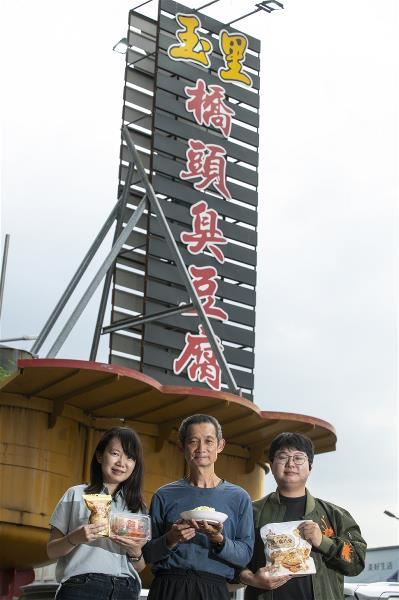2025-7-1
(Courtesy of Taiwan Panorama June 2025)
Chen Chun-fang /photo by Kent Chuang /tr. by Phil Newell
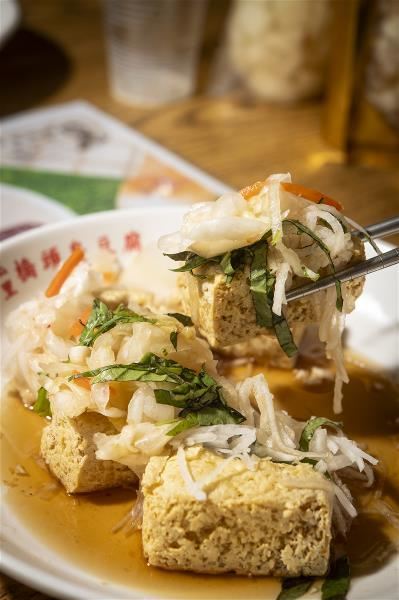
“Stinky tofu,” known in Chinese as chou doufu, is compared by some to blue cheese. It has been reported on by international media like the BBC and CNN, and a number of eateries that offer it have earned Michelin Bib Gourmand recommendations. It has even attracted a Japanese expert in fermentation to come to Taiwan. It is a dish that travelers to Taiwan should not miss out on.
Takeo Koizumi, a Japanese professor specializing in the study of fermentation and brewing, has traveled all over in pursuit of the secrets of the cultural backgrounds to, and foul smells of, malodorous foods. He has recorded his discoveries in a book called A Complete Collection of Stinky Foods.
Taiwan’s stinky tofu has long been famous far and wide for of its unique aroma. Koizumi had his first experience with this food in Taiwan, and said this about it in his book: “I was served a bowl of steaming stinky tofu topped with spicy soy sauce, and as I blew on it, I stuffed some of it into my mouth. At the first bite, I couldn’t help but emit a sigh of satisfaction. The crispy tofu seemed to put the lie to the repulsive stench that filled the restaurant, as the food transformed into an appetizing and incomparably fragrant delicacy with a meaty texture.” That’s high praise.
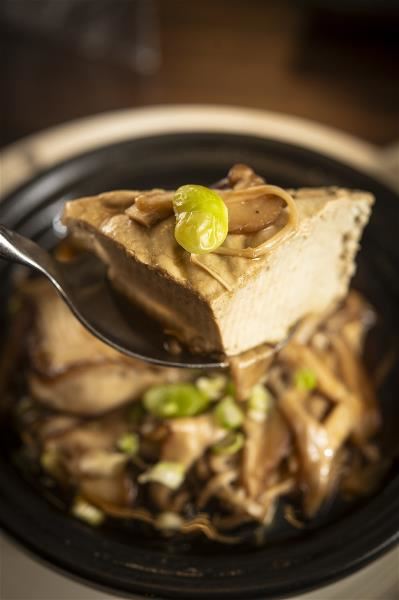
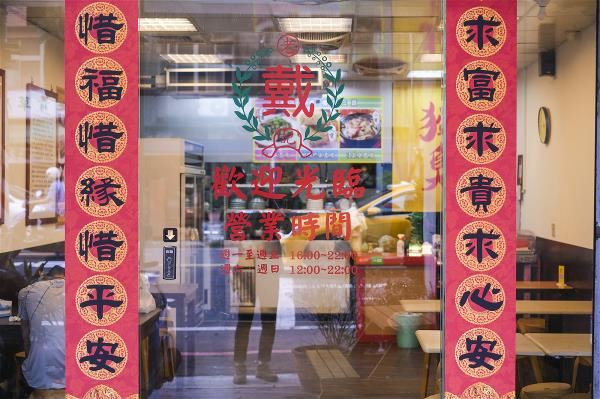
The secret to an appealing stench
Koizumi’s surprise evokes the question: How can ordinary tofu (a.k.a. bean curd) be turned into unforgettable chou doufu? Where does that disgusting odor come from?
Like Southeast-Asian fish sauce or Swedish pickled herring, stinky tofu is a fermented food. It is made by soaking tofu in a fermenting brine, where by the action of microorganisms over time, the tofu undergoes “proteolysis” (protein breakdown), which in turn generates powerful and complex odors. Chen Han-ken, a technologist at the Food Industry Research and Development Institute (FIRDI), explains that during the fermentation process, the microbes in the brine break down proteins into sulfur-containing amino acids which are further degraded into malodorous gases including hydrogen sulfide and ammonia. These are the sources of the “stink” in stinky tofu.
But there is more to chou doufu than just a foul smell, for various aromatic small-molecule amino acids, also produced during proteolysis, endow the stinky tofu with a special fragrance, creating a richly layered flavor. Meanwhile, carbohydrates in the tofu are metabolized by various microorganisms into alcohol compounds which provide a pleasant mellow, fruity aroma. It is this unique blend of pungent, umami, and aromatic elements that gives chou doufu its irresistible appeal.
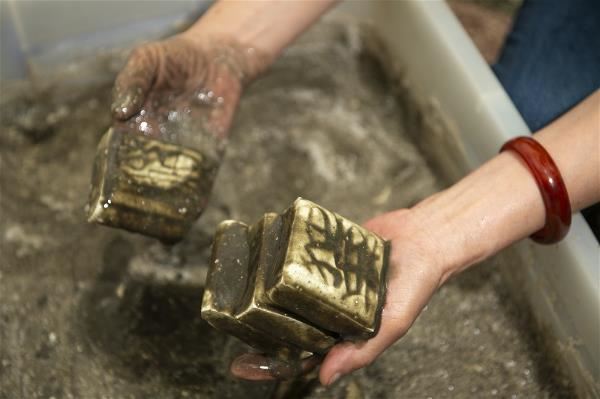
Dai’s House of Stinky Tofu
The key to the taste of stinky tofu lies in the fermentation brine. Every maker of fresh chou doufu has their own recipe and traditions for the brine. Because the ingredients used in the fermentation brine differ from maker to maker, they produce a wide variety of flavors. FIRDI has selected superior strains of fermentation microorganisms from traditional naturally fermented stinky tofu brines and introduced modern production management techniques to modernize and better control the process of making stinky tofu. It has even acquired related patents in many countries. However, while some makers use the new procedure, there are still venerable old shops that pride themselves in making chou doufu by artisanal methods using natural fermentation.
Dai’s House of Stinky Tofu is one example. Founder Jackie Wu says that she learned the craft of making chou doufu from her parents, and her family started out in the stinky tofu wholesale business way back in 1950. Her younger brother took over the making of dried tofu (dougan), while she herself carries forward the family’s tradition of making chou doufu.
In 1991, Wu opened a stinky tofu restaurant under the name of her stepfather, Dai Ji, in gratitude for his teaching her his chou doufu making techniques. Determined to stick to the traditional fermentation method, Wu has cultured her own communities of fermentation brine microorganisms. Unlike the common practice of combining a bunch of ingredients and letting them ferment together, she separately ferments more than ten kinds of vegetables and medicinal herbs (including winter melon, edible amaranth, and ginger), and then blends them based on her experience to create a unique fermentation brine.
Stinky tofu that has been soaking in Wu’s vegetarian brine looks grey on the outside, and although it is malodorous, it is not overly pungent, and still has the fragrance of herbs. Great care must be taken with every piece of chou doufu, says Wu with a smile. She adds that when removing stinky tofu from the fermenting brine, rather than taking all the pieces out at once, it is necessary to squeeze each one to check the texture and see whether it is sufficiently fermented.
Just as restaurants grade the spiciness of each dish on their menus, Dai’s grades its stinky tofu. Wu relates that there are three elements in determining the grade: the strength of the ferment, the length of the fermentation time, and the temperature. The standard Grade 12 fully fermented chou doufu is used to make their signature dish—deep-fried stinky tofu. This food, with its crispy skin and soft inside, blends the taste of soybeans with that of herbs. Seasoned with Dai’s specially made in-house pepper salt, it is a source of inexhaustible delight.
Wu, who is very proud of her family’s product, says that her favorite is cold stinky tofu made with Grade 13 chou doufu. This type, which is refermented at a low temperature, has a richer odor and a denser mouthfeel than Grade 12, and tastes sweet and fragrant when paired with specially made seaweed flakes.
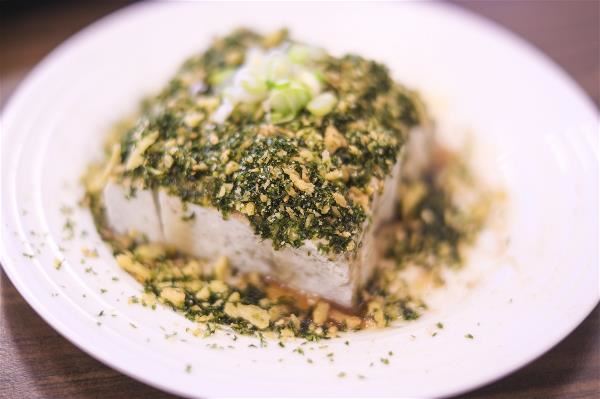
The skills to making stinky tofu
While most stinky tofu sold at eateries is deep-fried in oil, when Wu first founded her restaurant she prepared chou doufu in all kinds of ways: steamed, stir-fried, braised, deep-fried, boiled…. She has even offered secret menu items on an ad-hoc basis including uniquely flavored delicacies, such as braised fish-head casserole with stinky tofu, that keep gourmands coming back again and again.
Although these days the menu at Dai’s has been simplified and the days of elaborate stinky tofu banquets are gone, the shop still offers chou doufu dishes rarely seen at other establishments, such as stinky tofu burgers and “stinky ingots.” For the burgers, she cuts open a piece of chou doufu and stuffs it with lettuce, tomato, mushroom, and cucumber, then drizzles on a specially made condiment to dish up a product that has a great appearance, fragrance, and taste. For stinky ingots, she makes a filling from azuki bean paste, edamame, and stinky tofu, wraps it in a dumpling skin and deep-fries it, making an unexpected chou doufu sweet treat that combines the sweetness of beans with a faint funky smell.
Seeing that we can’t get enough, Wu takes a jar of some mysterious substance out of the refrigerator. It is Dai’s premier product—Grade 15 stinky paste. Wu says with a smile that the contents of this jar should not be underestimated, and notes that sometimes the families of patients in intensive care units in hospitals will add water to dilute the paste and then pour a spoonful of it into the patients’ feeding tubes to aid digestion. The condiment used in stinky tofu burgers is also made with this paste. She recommends that people try topping giant freshwater prawns with stinky paste and salt and then roasting them. The smellier the odor that is produced during the roasting, the more unique the dish becomes. “This is because when you make something stinky to the most extreme extent, it becomes fragrant!” says Wu happily.
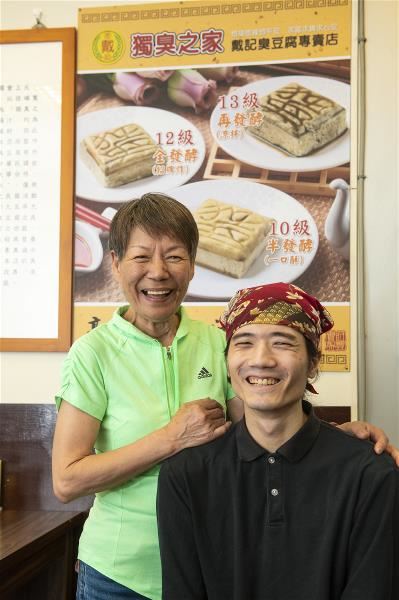
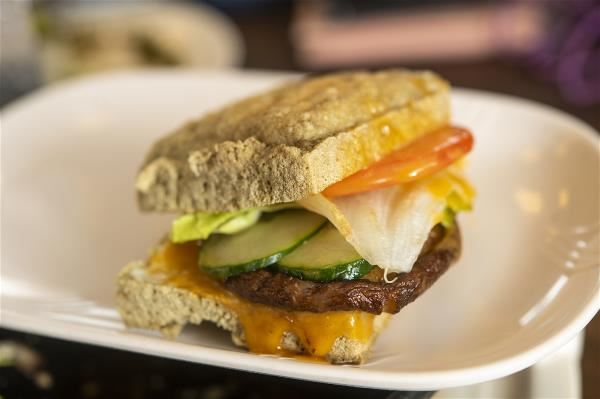
Qiaotou Stinky Tofu: An Yuli landmark
In Taiwan, the simple art of making tofu can provide economic support for whole families. Yang Debin, second-generation proprietor of Qiaotou Stinky Tofu in Hualien’s Yuli Township, learned his craft from his mother, and has carried on this family enterprise for 30 years now, making the most out of these cubes of bean curd.
Yang recalls the days when he first returned home to take over the business. Then still employed by the Taiwan Railways Administration, he would hurry home after work to fry stinky tofu. Customers often complained that the taste of his product wasn’t up to snuff, and sales were unsteady. But he refused to give up, continuing to refine his deep-frying technique. He invented his own triple deep-frying system that locks the moisture into the chou doufu, producing a food with a crispy skin and soft insides.
Yang is also very particular about the “soulmates” of his stinky tofu—his sauce and pickled vegetables. He handmakes his own pickled veggies, which must be stirred multiple times to make them crispy and delicious. He also insists on using high-quality shredded radish, which doesn’t even need to be pickled, but can be served raw so that eaters can enjoy the moisture and natural sweetness. “Customers say that our radish is like Oriental pears—juicy, juicy, juicy,” says Yang with a laugh.
Qiantou’s steaming hot freshly deep-fried chou doufu, accompanied by pickled vegetables and shredded radish, topped with their specially made in-house sauce, and garnished with Taiwanese basil, has very rich textural layers apparent at the first bite. To many people the dish is unforgettable. Under Yang Debin’s management, this brand expanded from a little street stall beside an irrigation ditch to a double-storefront shop. Many customers come here just based on its reputation, and it has become an Yuli landmark.
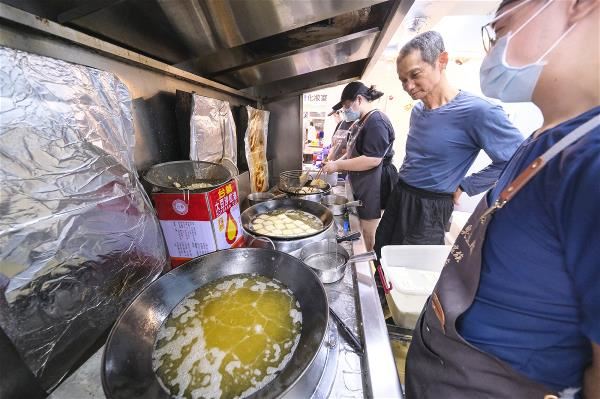
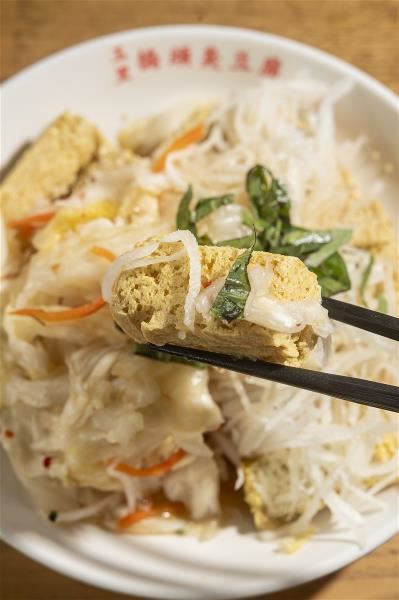
New directions for stinky tofu
To produce ideal stinky tofu, Yang goes beyond just his insistence on the number of rounds of deep frying and the quality of the accompanying ingredients. He started out by ordering tofu from vendors and fermenting it in his own brine to make his chou doufu. But the quality of the bean curd they supplied was uneven, making it hard for him to make a product with a uniform texture. In pursuit of consistent quality, he made a choice which might look crazy to most people—he decided to learn from scratch how to make fresh tofu himself.
Yang says with humor that back then his attempts to make tofu often failed, leaving the shop with no chou doufu to sell. But he gritted his teeth and persevered, telling himself: “Just get on with it.” Finally, after two months of experimenting, Yang produced tofu suited to the needs of his brand. “The quality is super stable and it’s easy for anyone to deep-fry it,” he says with satisfaction. It was with this same sense of determination that Yang has over time opened branch stores.
As Yang’s children have returned home to help out, Qiaotou is being handed over to the third generation, and has expanded beyond Yuli into locations including Hualien City and Yilan’s Jiaoxi Township. His elder daughter, Yang Yining, has gone a step further and developed cold stinky tofu dishes. She has adjusted the frying time of the tofu and come up with three versions of cold chou doufu: plain, garlic, and lemon-scented sour and spicy. Stinky tofu is steeped in the relevant sauce until it fully absorbs it, and the cool, refreshing taste has proven to be quite popular.
The earthquake of April 3, 2024 hit the Hualien‡Taitung region hard and accelerated the launch of Qiaotou’s home delivery service. They offer a home delivery pack, so that people only need to use a frying pan or air fryer to enjoy the delicious taste of stinky tofu in their own abodes. Qiaotou has also worked with a company to develop chou doufu cookies, which are on sale at airports in Canada and Hong Kong. Today this stinky tofu business is not only supporting a family, but is striking out in new directions.
